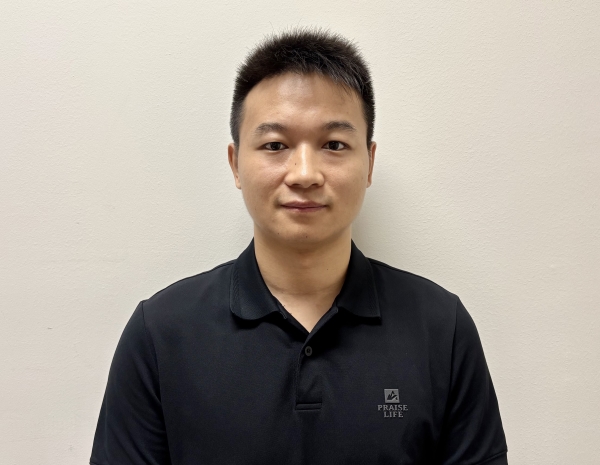
By Alistair Jones
SMU Office of Research – Even by the standards of medical terminology, photoplethysmography (PPG) is a mouthful. Yet it is widely used in clinical settings as a non-invasive, optical technique for measuring the oxygen saturation level in the blood, and the pulse rate, as vital signs of a patient. It is commonly encountered as a clip-on oximeter attached to a finger.
First developed in the 1930s, PPG emits light to illuminate the microvascular bed of the skin. Then a photodiode, positioned alongside the light emitter, captures the reflected light, termed the PPG waveform, which provides insights into the cardiovascular system. Since the 1980s, oximeters have been a standard component in the US for patient monitoring during anaesthesia.
With the 2010s came the rise of consumer health wearables, such as the smartwatches and fitness trackers that are now used by millions of people. PPG is incorporated into these devices but environmental factors limit the range of accurate information they can provide, compared with PPG used in stationary settings.
Finding the means to unleash the potential of PPG for wearable healthcare is the focus of new research headed by Dong Ma, an assistant professor in the School of Computing and Information Systems at Singapore Management University (SMU). The project has been awarded a Ministry of Education (MOE) Academic Research Fund (AcRF) Tier 2 grant.
"I aim to enhance the accuracy and reliability of PPG-based monitoring of human vital signs and unlock new capabilities for human cardiovascular monitoring in real-world scenarios, using wearable devices," Professor Ma says.
Significant challenges
"The world is facing the grand challenge of an increasingly ageing population. Increasing people’s awareness of health management and developing wearable technology to monitor health status in daily life, especially for the elderly, plays a vital role in this campaign," Professor Ma says.
But the full realisation of PPG's potential in practical wearable settings encounters two significant challenges. The first of these is motion artefacts.
"Any factor that affects the propagation path of light will distort the PPG signal and affect the sensing performance," Professor Ma says.
"Motion artefacts, such as different active movements of the user, can cause displacement between the PPG sensor and human skin. As a result, the transmitted light and received light may not align well with the blood pulses, introducing noise to the recorded PPG signal."
The second impediment to gaining accurate PPG readings with wearables is posture.
"When human posture changes during wearing a smartwatch, the contact pressure (tightness) between sensor and skin also changes, resulting in the deformation of skin and the quality of the PPG signal," Professor Ma says.
Given that wearable devices are meant to be used in active scenarios, and that they have been incorporating PPG since the 2010s, it begs the question of why it has taken so long for research such as Professor Ma's to eventuate. He points out that, in fact, improving the quality of PPG signals has always been an active research topic during the past decades.
"But the [proposed] solutions evolve from pure signal processing to more advanced learning-based approaches," Professor Ma says.
"In my opinion, there are two key reasons why improving a distorted PPG signal is challenging: first, the intended signal (blood pulses) is much weaker than external motion artefacts; and second, when there is a displacement (such as sensor detached from the skin), the intended blood pulses are completely absent in the measured signal, making restoration extremely challenging."
Pressure sensors
The novel solution proposed by Professor Ma and his co-researchers is to incorporate the contact pressure (CP) of the device against the skin into the calculations.
"Currently, there is very little research exploring the impact of CP on the PPG signal. And all of them just demonstrate CP can affect the waveform pattern of the PPG signal, but do not propose any solution to address the issue. My proposal aims to integrate CP as a main factor," Professor Ma says.
"Since the proposal submission, we have started working on the project and have successfully developed an effective transformation model that can reconstruct CP-distorted PPG waveforms. That paper is currently under review."
But a move into the real world will require the fabrication of transparent pressure sensors that do not impede the light flows of PPG.
"Based on initial exploration, currently there are no commercially available transparent pressure sensors. But during my interaction with researchers from material science, [I have found] it is technically possible to manufacture such pressure sensors," Professor Ma says.
"And of course, my proposal can promote their development, as material researchers are always looking for a good application for their development. I am seeking collaboration with these researchers to build the sensor."
Real-world monitoring
"Current PPG-based wearable devices are good at measuring HR (heart rate) and SpO2 (oxygen saturation level) in both stationary and motion cases," Professor Ma says.
"They also support the measurement of HRV (heart rate variability) and BP (blood pressure) but are constrained in stationary cases with a proper setting to obtain a good performance.
"The performance degrades in active scenarios as they require more fine-grained and sophisticated features. Other applications, such as breathing rate estimation, vascular ageing, atherosclerosis and blood glucose estimation have been demonstrated with PPG in [stationary] research, but are still challenging to deploy on wearable devices for real-world monitoring.”
Professor Ma's research is particularly pertinent to Singapore.
"First, Singapore is one of the countries that is considered super-aged in the near future. Wearable healthcare technology is an effective weapon in elderly care, promoting an active lifestyle and fostering overall wellbeing," he says.
"Second, cardiovascular disease accounted for 31.4 percent of all Singaporean deaths in 2022, and more than 400,000 Singaporeans are living with diabetes. These diseases require continuous and daily monitoring of the health status, whereby PPG-based wearable technology can help."
Professor Ma has become an expert in wearable sensing. So, how did this come about?
"Many of my previous research projects have focused on human behaviour sensing, but I found physiological sensing has more significance as it reflects how internally the human body is functioning. And I believe with the increased awareness of health management and global ageing, there are more needs and challenges that can be explored in the future," he says.
Back to Research@SMU February 2025 Issue
See More News
Want to see more of SMU Research?
Sign up for Research@SMU e-newslettter to know more about our research and research-related events!
If you would like to remove yourself from all our mailing list, please visit https://eservices.smu.edu.sg/internet/DNC/Default.aspx

